There is an aspect of the French Campaign of 1940 which often overlooked: Despite the bulk of the action occured between the Germans on one side, in the north, and the French, BEF, and Belgians on the other, Mussolini declared war on France and Britain in june, 10, expecting to gain quick territorial advantages as part of his territorial ambitions in the Mediterranean. However whereas his forces were stuck on the Alpine Line, at the eve of the armistice, both the French Marine Nationale and the Royal Navy launched a joint operation against Italian assets. This a little-known naval episode of WW2.
The joint allied naval plan
Traditionally, the French Navy and Royal Navy naval agreement of the 1930s was a reproduction of what it was in 1914: The British might would take in charge the Atlantic and North sea while the French took over the Mediterranean. This did not prevented the Royal Navy to still maintain considerable assets, headed by respected admiral John Cunningham. As considered by Mussolini his “prison bars” comprised Alexandria in the East and Gibraltar in the west, that all but locked his “Roman lake” and stemmed his ambitions. See 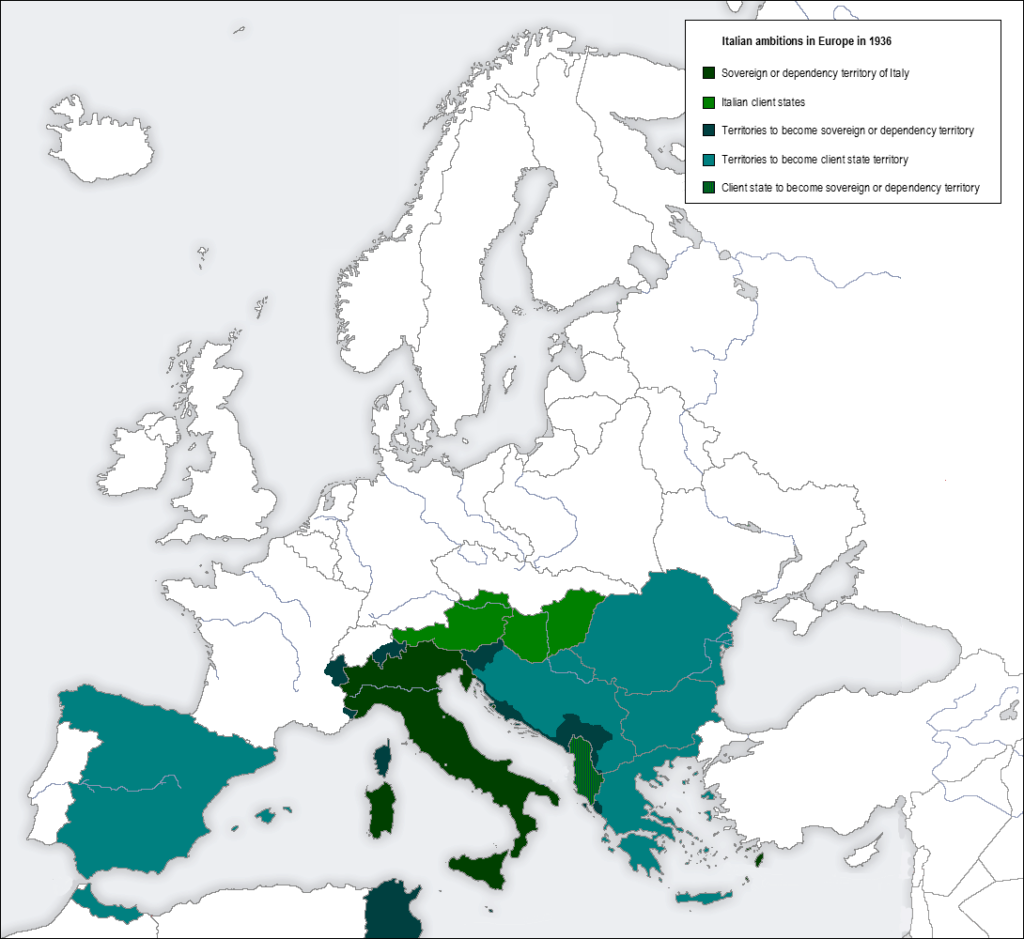 Italian claims in 1936..
Italian claims in 1936..
Therefore prior to the Italian declaration of war, the Royal Navy and French Navy planned to make a raid into the Mediterranean, to provoke the Regia Marina into battle. The Mediterranean Fleet was to sail towards Malta to test the effectiveness of the Italian air and submarine forces, while the French were to shell shore targets in the Gulf of Genoa, the Tyrrhenian Sea, southern Italy, Sicily and the Dodecanese, aimed on logistical hubs of the coast. Both fleets had a 12:1 advantage in Capital ships. On the opposing side, the fleet headed by Admiral Domenico Cavagnari (chief of staff) also thought of avoiding a decisive battle and rather use his surface fleet to mine the Sicilian Channel and rather launch his submarines to attempt to sink as many Allied ships as possible. Italy at least had the advantage of a considerable aviation, the third world’s largest bomber fleet, and good submarines, as shown later when operating against allied shipping in the Atlantic from Bordeaux.
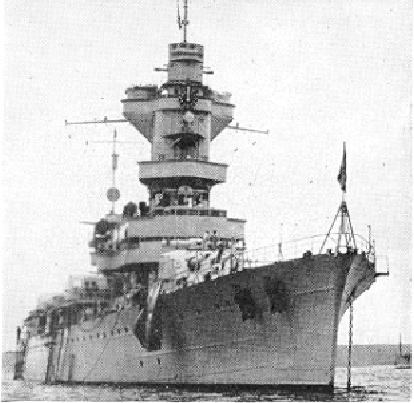
French Cruiser Algérie
Technically the French fleet led many actions before the Italian declaration of war, notably escort of ships in and out its North African colonies, and Atlantic chase of German commerce raiders, including the Graf Spee. However with the overrun by Germany, the initial naval offensive planned by the allies was not undertaken. In the Mediterranean however, four French cruisers and three destroyers patrolled the Aegean Sea in the opening days of the war and the French submarine fleet was also patrolling some key sectors. The Royal Navy’s Mediterranean squadron also patrolled the coast of Africa.
On 12 June, a report of German warships entering the Mediterranean scrambled the French fleet. This was proven later false, but the French were spotted by the Italian submarine Dandolo which fired at the light cruisers Jean de Vienne, and sister-ships La Galissonnière, and Marseillaise while on another sector, south of Crete, Italian submarine Bagnolini sank the British cruiser HMS Calypso. It should be noted that a raid of Fiat BR20 bomber was made on Toulon in the 12-13 june night, but without hitting any French ship at anchor, which followed a shelling on Bizerte on June 12. So the French were eager for a retaliatory operation.
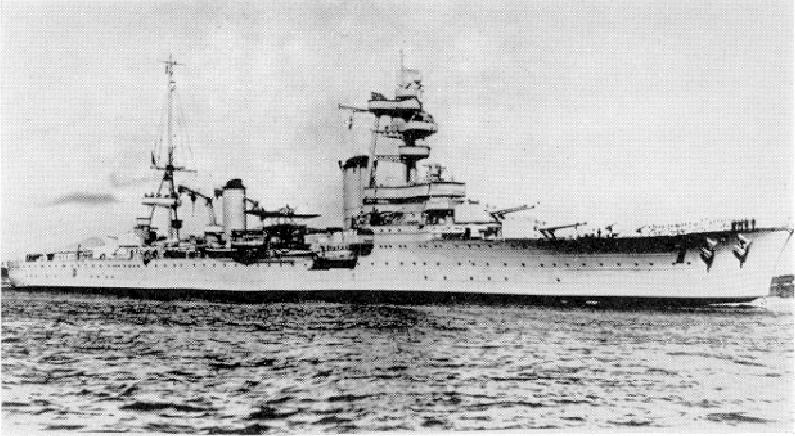
The Foch, a Suffren-class cruiser (as were the Colbert and Dupleix).
Operation Vado
On 13 June, the French Navy launched Operation Vado. This operation comprised the French 3rd Squadron (four heavy cruisers and 11 destroyers) from Toulon, bound to Italy, aiming at striking strategic assets. The group would then split, with Algeria, Foch and the destroyers Aigle, Cassard, Chevalier Paul, Lion, Tartu and Vauban heading for Vado and Savona, while the second group consisted of the heavy cruisers Colbert and Dupleix escorted by destroyers Albatros, Guepard, Valmy, Vautour and Verdun, heading for Genoa. They made their night trip without being spotted at 25 knots. In case the fleet was discovered and chased, four submarines, Iris, Vénus, Pallas and Archimède had been sent to create a “net” covering the retreat.

French Destroyer Valmy
At 04:26 the day after, 14 June, the cruisers opened fire on the shore and their designated targets from 16,000 yards (15,000 metres). Soon Algérie set ablaze storage tanks in Vado Ligure. Already at 1 AM, a night raid by the French aviation already lit up some of the objectives the Cruisers had to targe.
However the backside of this was that soon also a thick black smoke poured over the area, cluttering the vision and reducing the fire precision. This did not prevented Foch to shell a steel mill in Savona. Colbert and Dupleix destroyed gasworks at Sestri Ponente. However nearby Italian shore batteries west of Genoa and Savona openened fire. AT17 battery of Savona in particular was precise in its fire. Soon, amazingly, a Navy armoured train entered the fray and opened fire on the French cruisers. The Batteria Mameli (Pegli) scored a hit on the French destroyer Albatros, which had to retire. The Italian torpedo boat Calatafimi off Genoa in escort of a minelayer in order to secure the approach spotted the French attack and thanks to the mist, was not seen at first by the French, leaving the option to Lt. Giuseppe Brignole to try a torpedo attack. While she moved into position the torpedo boat was spotted by French destroyers which had a much greater firepower. They opened fire but near-missed the Catalafimi which also took damage, but was able to launch a volley of torpedoes. However none made any hit, and the Catalafimi veered and returned for another attack, this time on the cruisers Colbert and Dupleix. A new volley was fired, but failed again and the French cruisers secondary armament now were aimed at her. She launched a smoke screen and retired full speed ahead towards Genoa.
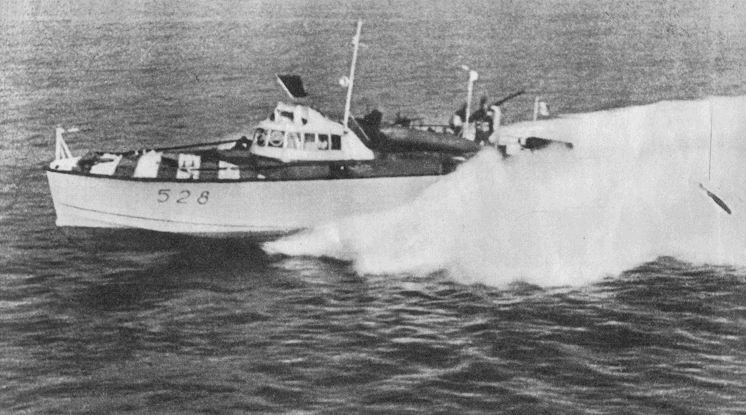
MAS 528 in action
After a while however, the Italian coastal artillery were becoming more precise and the Colbert and Dupleix, now squared, withdrew. The French destroyers however succeeded to silence a shore battery at Cape Vardo. Meanwhile, southeast of Savona, the Italian 13th MAS squadron in patrol had been re-routed to catch the French fleet near Genoa and Savona. MAS539 went close to 2,000 yards (1,800 metres) of Algérie, the best protected cruiser, and Foch, firing two torpedoes, which missed. MAS534 and MAS538 also fired their torpedoes with the same result. MAS535 however has been spotted and squared, lightly hit with three casualties and had to withdrew. Having fired their torpedoes, the entire MAS squadron retired. But the French also had concerns themselves about the Italians having themselves a cruiser squadron en route.
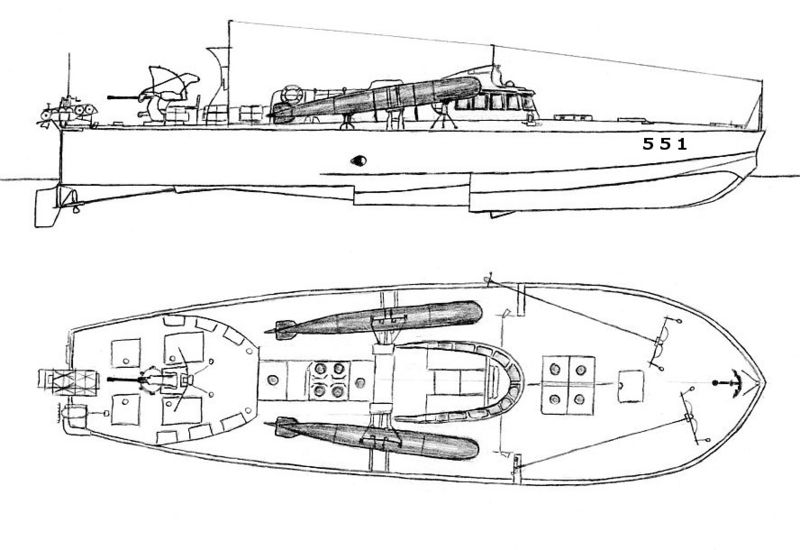
Rendition of the MAS 551
On their side, the French cruisers were all back safe at 25 and then 27 knots, with two submarine alerts on the way, before midday on 14 June having spent 1,500 shells (500 of 203mm -8in and 800 of 138 mm (destroyers), 1600 total with the Cruisers secondary armament), while the Italian coastal batteries claimed having fired around 300 shells. However the French report stated that if the main objectives has been hit there was no certainty of important, durable damage for the logistics and industries on the coast. The Calatafimi’s crew believed that their torpedoes hit the Albatros because of a light effect on the side of one cruiser, and made a claim which was later exploited for propaganda purposes. Mussolini reported that the brave attack combined with the efficient coastal fire had repelled the French squadron. Lieutenant Brignole was later awarded the Medaglie d’Oro for his gallant conduct.
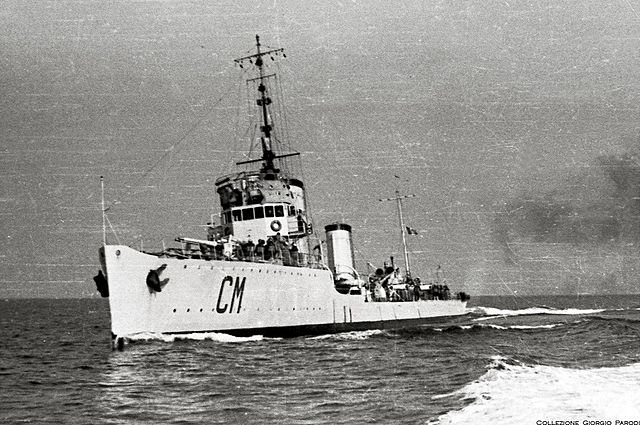
Torpedo Boat Calatafimi, a former Curtatone class destroyer, in 1940.
Other Operations
In coordination with the navy a squadron of Lioré et Olivier LeO 45 from the French air force raided Italian airfields, whereas nine Royal Navy’s Fairey Swordfishes of No. 767 Squadron based in Hyères attacked Genoa. The French raid decided Mussolini to order the Regia Aeronautica to start a raiding campaign in return against metropolitan France, following reconnaissance missions. By June, 17, Italian submarine Provana attacked a French convoy from Oran, missed, was spotted by escorting sloop La Curieuse, which launched her depth charge on the spot. The submarine was badly shaken, and forced to surface, spotted by the sloop, rammed and sank. The French sloop however was a small ship that took severe bow damage in the process and had to retire for extensive repairs. The Provana was in fact the only Italian submarine sank by the French Navy during the war.
The same French squadron made new raids on 18 and 19 June to try to lure out the Italian fleet, without results. On June, 21, the French battleship Lorraine, escorted by British cruisers HMS Orion and Neptune, Australian HMAS Sydney, and British destroyers, shelled Bardia, which caused minor damages but was the last combined allied naval operation before the French surrender. The very last French action was a raid of naval aircraft on Livorno which razed an hotel and beach resort and caused some panic…
Read More
Google Book – Struggle for the Middle Sea By Vincent O’Hara
Opération Vado (Fr)
Italian invasion of France and naval operations
On atf40.forumculture.net

 Latest Facebook Entry -
Latest Facebook Entry -  X(Tweeter) Naval Encyclopedia's deck archive
X(Tweeter) Naval Encyclopedia's deck archive Instagram (@navalencyc)
Instagram (@navalencyc)





 French Navy
French Navy Royal Navy
Royal Navy Russian Navy
Russian Navy Armada Espanola
Armada Espanola Austrian Navy
Austrian Navy K.u.K. Kriegsmarine
K.u.K. Kriegsmarine Dansk Marine
Dansk Marine Nautiko Hellenon
Nautiko Hellenon Koninklije Marine 1870
Koninklije Marine 1870 Marinha do Brasil
Marinha do Brasil Osmanlı Donanması
Osmanlı Donanması Marina Do Peru
Marina Do Peru Marinha do Portugal
Marinha do Portugal Regia Marina 1870
Regia Marina 1870 Nihhon Kaigun 1870
Nihhon Kaigun 1870 Preußische Marine 1870
Preußische Marine 1870 Russkiy Flot 1870
Russkiy Flot 1870 Svenska marinen
Svenska marinen Søværnet
Søværnet Union Navy
Union Navy Confederate Navy
Confederate Navy Armada de Argentina
Armada de Argentina Imperial Chinese Navy
Imperial Chinese Navy Marinha do Portugal
Marinha do Portugal Mexico
Mexico Kaiserliche Marine
Kaiserliche Marine 1898 US Navy
1898 US Navy Sovietskiy Flot
Sovietskiy Flot Royal Canadian Navy
Royal Canadian Navy Royal Australian Navy
Royal Australian Navy RNZN Fleet
RNZN Fleet Chinese Navy 1937
Chinese Navy 1937 Kriegsmarine
Kriegsmarine Chilean Navy
Chilean Navy Danish Navy
Danish Navy Finnish Navy
Finnish Navy Hellenic Navy
Hellenic Navy Polish Navy
Polish Navy Romanian Navy
Romanian Navy Turkish Navy
Turkish Navy Royal Yugoslav Navy
Royal Yugoslav Navy Royal Thai Navy
Royal Thai Navy Minor Navies
Minor Navies Albania
Albania Austria
Austria Belgium
Belgium Columbia
Columbia Costa Rica
Costa Rica Cuba
Cuba Czechoslovakia
Czechoslovakia Dominican Republic
Dominican Republic Haiti
Haiti Hungary
Hungary Honduras
Honduras Estonia
Estonia Iceland
Iceland Eire
Eire Equador
Equador Iran
Iran Iraq
Iraq Latvia
Latvia Liberia
Liberia Lithuania
Lithuania Mandchukuo
Mandchukuo Morocco
Morocco Nicaragua
Nicaragua Persia
Persia San Salvador
San Salvador Sarawak
Sarawak Uruguay
Uruguay Venezuela
Venezuela Zanzibar
Zanzibar Warsaw Pact Navies
Warsaw Pact Navies Bulgaria
Bulgaria Hungary
Hungary

 Bundesmarine
Bundesmarine Dutch Navy
Dutch Navy Hellenic Navy
Hellenic Navy Marina Militare
Marina Militare Yugoslav Navy
Yugoslav Navy Chinese Navy
Chinese Navy Indian Navy
Indian Navy Indonesian Navy
Indonesian Navy JMSDF
JMSDF North Korean Navy
North Korean Navy Pakistani Navy
Pakistani Navy Philippines Navy
Philippines Navy ROKN
ROKN Rep. of Singapore Navy
Rep. of Singapore Navy Taiwanese Navy
Taiwanese Navy IDF Navy
IDF Navy Saudi Navy
Saudi Navy Royal New Zealand Navy
Royal New Zealand Navy Egyptian Navy
Egyptian Navy South African Navy
South African Navy






























 Ukrainian Navy
Ukrainian Navy dbodesign
dbodesign